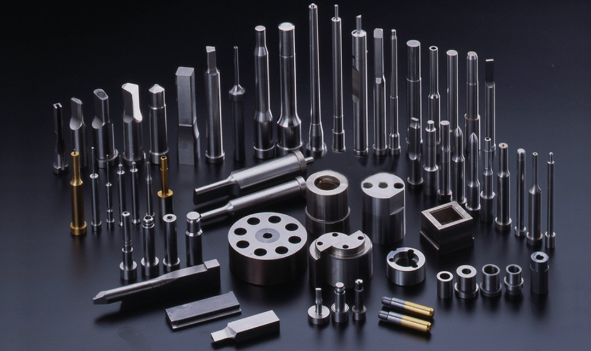In the world of metal stamping, tooling components stand as the backbone of any successful stamping die operation. These parts not only shape the final product but also directly influence the die’s lifespan and efficiency. Understanding how tooling components affect the durability and performance of stamping dies enables manufacturers to reduce downtime and costs.
Material Quality Determines Longevity
The choice of material for tooling components dramatically affects the durability of stamping dies. High-grade tool steels such as D2, A2, or M2 offer excellent hardness and wear resistance, which are essential for handling repetitive stamping cycles. These materials withstand abrasion, impact, and heat better than cheaper alternatives.
Moreover, surface treatments such as nitriding or coatings further enhance the performance of tooling components. These treatments increase surface hardness and reduce friction, preventing galling and corrosion. For example, a nitrided punch resists wear much longer, preserving sharp edges and precise dimensions. Thus, material quality directly impacts how long stamping dies can operate before requiring maintenance or replacement.
Design Precision and Its Effect on Performance
The design of tooling components plays a crucial role in the performance of stamping dies. Precise dimensional tolerances ensure that each element fits perfectly, minimizing misalignment during operation. Misalignment often leads to uneven pressure distribution, which causes premature wear and inconsistent part quality.
Additionally, well-designed components improve the stamping process speed and reduce vibration. For instance, properly engineered guide pins and bushings maintain die alignment throughout cycles, preventing damage to both the tooling and stamped parts. Hence, investing in high-precision tooling components yields smoother and more reliable stamping operations.
Maintenance Practices Extend Tool Life
Regular maintenance has a direct impact on the performance and durability of stamping dies. Proper lubrication, timely inspection, and replacement of worn tooling components prevent sudden breakdowns. Neglecting maintenance often results in component damage that escalates to costly die repairs.
In addition to routine checks, maintaining tooling components requires a clear schedule and detailed records. This approach helps anticipate wear patterns and plan proactive replacement of parts. For example, replacing springs and bushings before failure avoids unexpected downtime. Therefore, well-managed maintenance maximizes the service life of tooling components and ensures consistent die performance.
Impact of Tooling Components on Product Quality
Tooling components not only affect die durability but also dictate the quality of stamped parts. When components function flawlessly, they produce accurate, consistent shapes with minimal defects. Conversely, worn or damaged tooling parts cause burrs, cracks, or dimensional deviations.
For example, a dull punch edge can tear metal instead of cleanly cutting it. Similarly, worn guide pins can cause the die alignment to shift, resulting in products that are out of tolerance. Manufacturers who prioritize the quality of their tooling components often enjoy higher first-pass yields and reduced scrap rates. Ultimately, the relationship between tooling components and product quality is inseparable.
Advances in Tooling Technology
Recent innovations in tooling components contribute significantly to improved stamping die durability and performance. Technologies such as coated carbide inserts, advanced alloys, and modular tooling systems offer better wear resistance and easier maintenance.
Coated carbide tooling parts resist heat and abrasion far better than traditional steel. Modular designs enable the quick replacement of worn components without requiring the disassembly of the entire die, thereby saving time and costs. As a result, these technological advances would allow manufacturers to enhance stamping efficiency while extending the lifespan of their dies.
Cost-Benefit Analysis of High-Quality Tooling Components
Although high-quality tooling components may require a larger upfront investment, they offer long-term financial benefits. Reduced downtime, lower scrap rates, and fewer repairs translate into substantial cost savings over the die’s lifecycle.
Furthermore, improved die performance boosts production rates and customer satisfaction. On the other hand, inexpensive tooling components often lead to frequent failures and inconsistent product quality, resulting in higher overall costs. In conclusion, prioritizing high-quality tooling components is a prudent business decision that yields enhanced durability and improved performance.
Tooling Components Define Stamping Die Success
Tooling components fundamentally impact the durability and performance of stamping dies. From material selection and design precision to maintenance and technological innovation, every factor matters. Choosing and maintaining high-quality tooling components ensures longer die life, better product quality, and increased operational efficiency.
